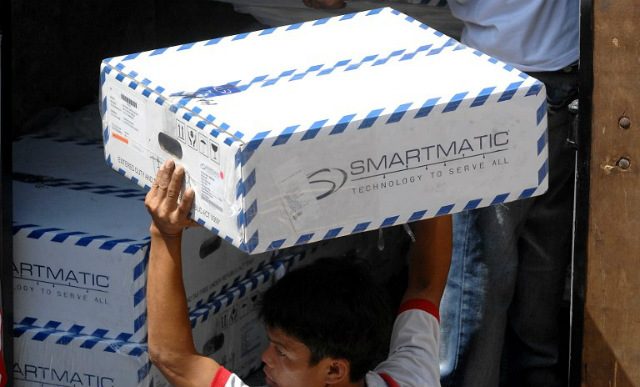SUMMARY
This is AI generated summarization, which may have errors. For context, always refer to the full article.

MANILA, Philippines – The Commission on Elections (Comelec) on Thursday, August 13, said it has decided to reuse the Philippines’ 81,000 old vote-counting machines in the country’s elections in 2019, but not in 2016.
The Comelec announced this as it decided to lease 93,000 optical mark readers (OMRs) from controversial technology provider Smartmatic for the 2016 elections. (READ: It’s final: PH to use contentious voting machines)
OMR is the generic name for the precinct count optical scan (PCOS) machines that the Philippines used in 2010 and 2013.
“The decision of the Comelec en banc is to bid out the refurbishment and upgrade of these 81,000 PCOS machines immediately after the May 2016 elections, and to use these machines for the 2019 elections,” Bautista said in a media briefing.
Bautista explained that this will give the winning bidder “a longer lead time” to repair the PCOS machines.
“What we noticed is that when you bid out a project as a rush job, it will mean that it will be more expensive, and that it will also entail greater technical risk,” he added.
“Kasi siyempre, ‘di ba, ‘pagka nagmamadali, ang mga gumagawa ng makina, minsan nagkakamali,” the chairman explained. (Of course, when they’re rushing, those making the machines sometimes commit mistakes.)
The Comelec already bought more than 81,000 PCOS machines from Smartmatic in 2012.
‘No longer feasible’
For 2016, the Comelec said it could not reuse these machines without refurbishing these.
Unfortunately for the Comelec, the Supreme Court in April nullified a newly signed contract for PCOS refurbishment because it didn’t undergo public bidding.
“In the beginning, all of us wanted to use the existing PCOS machines for the 2016 elections,” Bautista explained. He said this is “no longer feasible,” however, “because mainly of time constraints.”
Earlier, Senator Aquilino Pimentel III told reporters: “Nasasayangan ako doon sa luma. Binili na natin ‘yung 80,000, kaya sabi ko sa Comelec, kung hindi na kayo masyadong pressed for time, sagutin n’yo ang tanong ko: What will we do with the 80,000 na binili na natin?“
(I feel the old ones would be a waste. We already bought the 80,000, so I told the Comelec, when you’re no longer pressed for time, answer my question: What will we do with the 80,000 that we already bought?)
The Philippines used Smartmatic’s PCOS machines in its first and second automated elections, including the 2010 polls that elected President Benigno Aquino III. The 2016 elections will elect Aquino’s successor.
Still, while the Philippines is bent on using the same PCOS technology, the Comelec faces at least 3 potential obstacles.
Election watchdogs have filed 3 separate petitions before the Supreme Court against the Comelec’s last-ditch effort to ensure automated elections. (READ: Poll automation faces 3rd Supreme Court petition) – Rappler.com
Add a comment
How does this make you feel?
There are no comments yet. Add your comment to start the conversation.